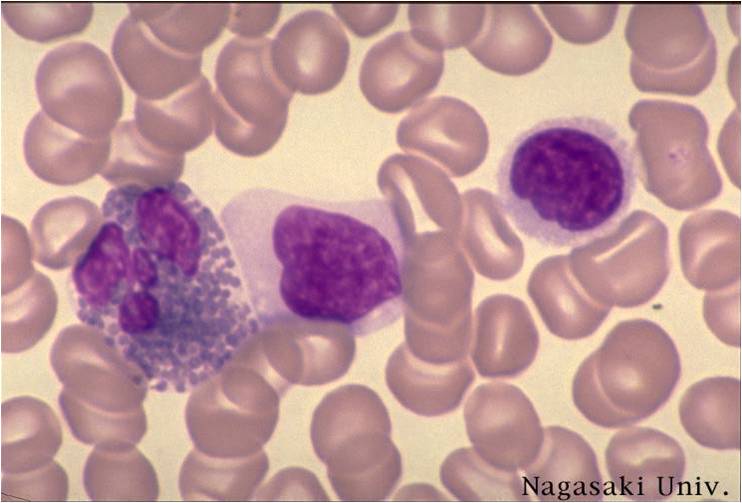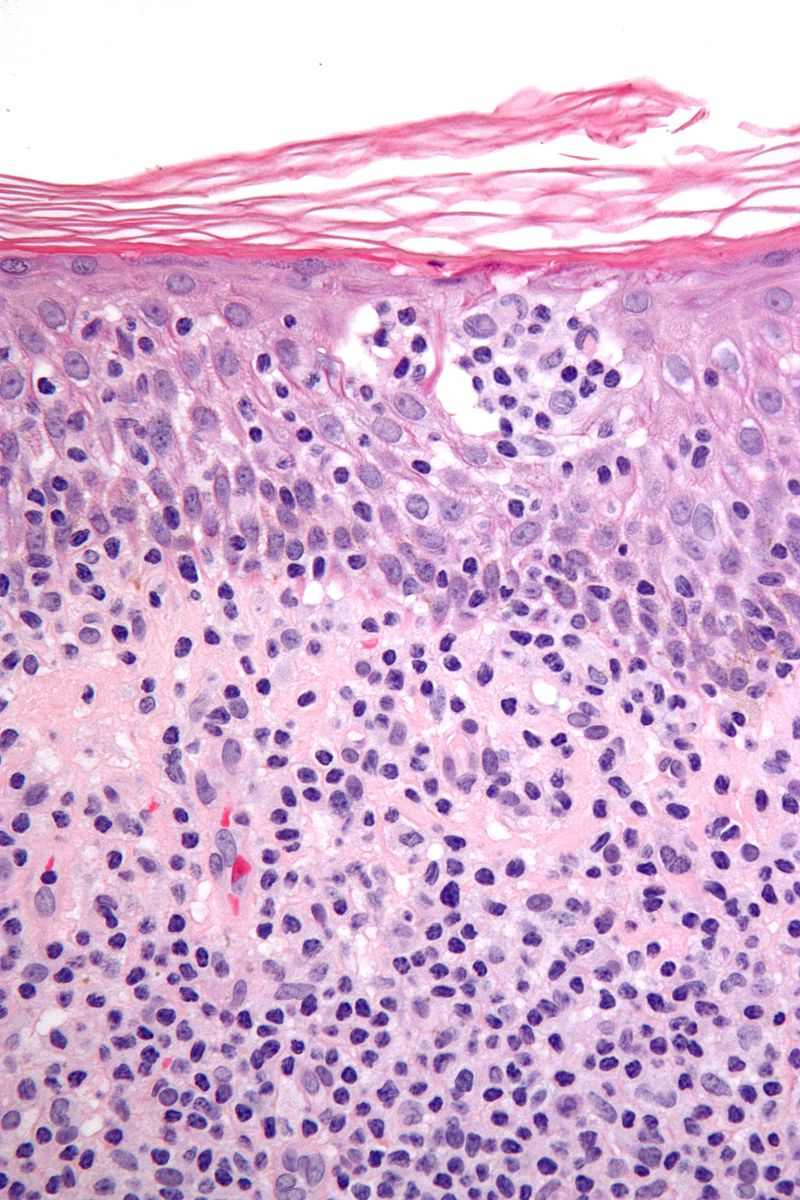Mycosis fungoides pathophysiology: Difference between revisions
Jump to navigation
Jump to search
No edit summary |
No edit summary |
||
| Line 15: | Line 15: | ||
<gallery widths=200px> | <gallery widths=200px> | ||
Image:Sezary syndrome 0001.jpg| Sézary's disease | Image:Sezary syndrome 0001.jpg| Sézary's disease | ||
Image:Cutaneous T-cell lymphoma - very high mag.jpg | [[Micrograph]] showing cutaneous T-cell lymphoma. [[H&E stain]]. | Image:Cutaneous T-cell lymphoma - very high mag.jpg| [[Micrograph]] showing cutaneous T-cell lymphoma. [[H&E stain]]. | ||
</gallery> | </gallery> | ||
Revision as of 14:31, 21 January 2016
|
Cutaneous T cell lymphoma Microchapters |
Editor-In-Chief: C. Michael Gibson, M.S., M.D. [1]; Associate Editor(s)-in-Chief: Sowminya Arikapudi, M.B,B.S. [2]
Overview
Pathophysiology
- Cutaneous T cell lymphoma is an unusual expression of T-cells, a part of the immune system
- These T-cells are skin-associated, meaning that they biochemically and biologically are most related to the skin, in a dynamic manner
- Sezary syndrome and Mycosis Fungoides are T-cell lymphomas whose primary manifestation is in the skin
- Mycosis Fungoides is the most common type of 'Cutaneous T cell lymphoma' (CTCL)
- Mycosis fungoides is initially an indolent lymphoma but in its later stages can cause peripheral lymphadenopathy and can finally progress to widespread extracutaneous visceral / internal organ involvement
- "Sézary's cells" are T-cells that have pathological quantities of mucopolysaccharides
- Sézary's disease is sometimes considered a late stage of mycosis fungoides
Microscopic Pathology
-
Sézary's disease
-
Micrograph showing cutaneous T-cell lymphoma. H&E stain.

